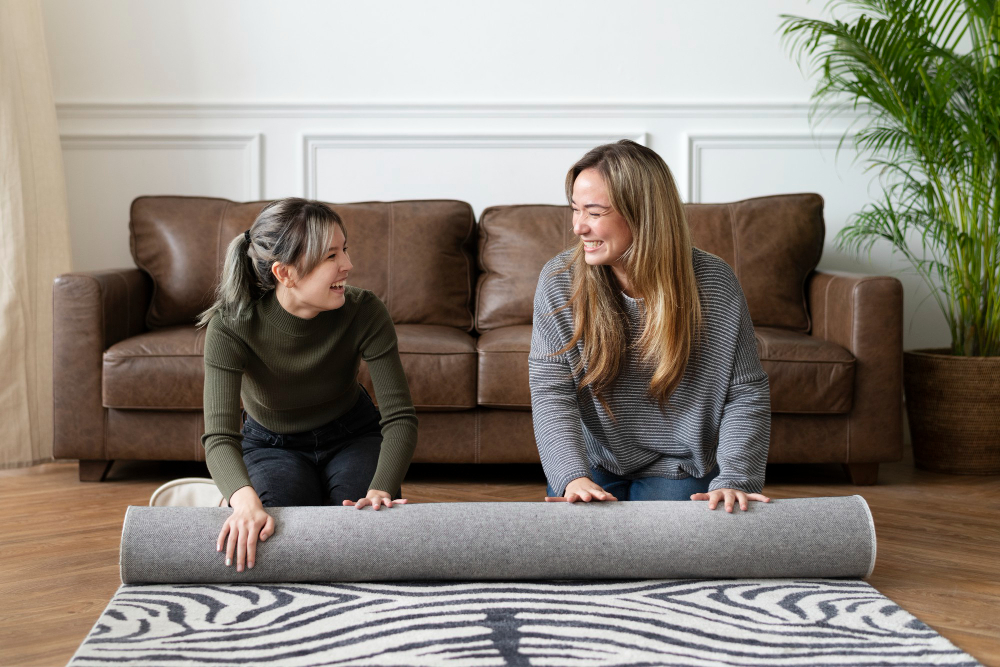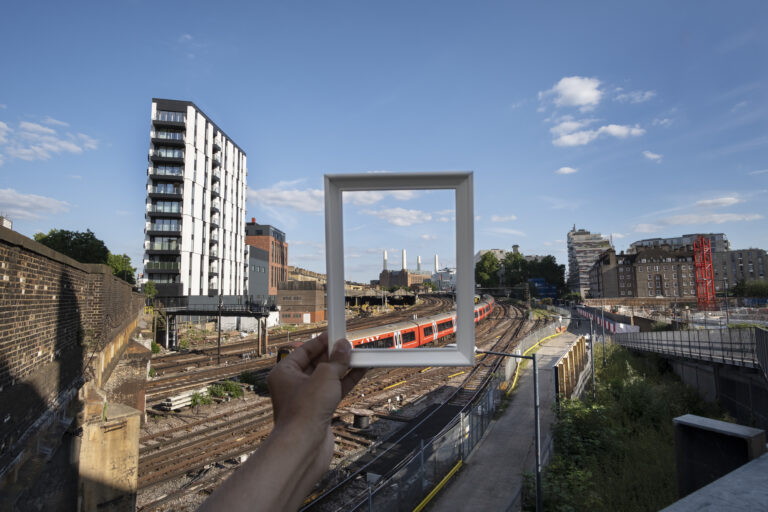Ah, area rugs! They’re not just simple floor coverings; Oriental rugs can be works of art and cultural and ethnic history. From the classic Oriental beauties to the chic modern patterns, a good rug can pull a room together like nothing else. But, like all great things, they need some love and care. So, you’ve splurged on that eye-catching rug, but now what? How do you keep it looking pristine and vibrant? Let’s dive into the world of rug care, cleaning & maintenance.
Regular Vacuuming: The Unsung Hero
Dust and dirt can be sneaky little critters like wool moths that cause damage to your area rugs. Regular vacuuming keeps your rug looking fresh, clean, and free from those pesky dirt particles. Be mindful of the rug’s beater bar with think flatweave or kilim rugs; remember, turn off the beater bar or raise the height adjustment. Why, you ask? Well, the aggressive action can pull your rug into the vacuum or the end tassels and fringes and damage or frey the rug. When possible, vacuum in those dark areas under a sofa or bed; moths and carpet beetles like to hang out and nibble on your wool rugs, It’s also where dust bunnies like to hide.
Spot Cleaning: The Art of Quick Action
Spilled some wine? Dropped spaghetti sauce? Don’t freak out! The key here is to act swiftly. Blot, don’t rub – we can’t stress this enough. Rubbing pushes the stain deeper and may distort and damage the carpet pile. A clean cloth and a mild hand dish detergent are the best action. Be mindful of cleaning products; not all carpet cleaning products are safe for natural fibers in area rugs and fine oriental carpets. Some carpet cleaning products are formulated for synthetic carpets, and they can cause damage to wool and other natural fibers.
Rotate, Rotate, Rotate
Rarely does a rug receive even use, so one side or end is exposed to more foot traffic; Sunlight and foot traffic take a toll on your rug. Simply rotating rugs every few months ensures even wear helps prevent unsightly faded splotchy patches and extends cleaning intervals, thereby saving you money.
Professional Cleaning: For the Deep Cleaning
Sure, you can handle the little mishaps, but now and then, your rug craves a deep cleaning. This is where the rug pros come in. When hunting for area rug cleaners, keep an eye out for those with expertise in Oriental rug cleaning. Rug Cleaning Portland experts Renaissance Rug Cleaning say, “Make sure the rug cleaner has experience and training to care for your fine rugs properly”. Look for area rug cleaners with a rug wash plant and take your rugs off-site for in-plant rug cleaning. In-home rug cleaning fails to remove deeply embedded soils and stands. Some oriental rugs can be tricky to clean so its important to take rugs to a seasoned oriental rug cleaning workshop .
Rug Cleaning intervals depend on the amount of use. Still, the interval is every as often as one year in high traffic areas entry, heavy family room use to 3 three years average or longer with rugs in rarely used formal dining rooms or guest bedrooms. Cleaning your rug too often is a waste of money.
The Hand Test: Run your hand over the rug. If your hands come away dirty, sticky, and dusty, or if there’s a lot of dust and fibers in the air, it’s time to clean it.
Check the Pile: Pick up a corner of the rug and spank the back of the rug while holding it. If a cloud of dust flies out, the rug is in need of cleaning.
Look at the Foundation: Fold back a corner of the rug and look into the base of the pile. Is there a build-up of dust and dirt, it’s time for a cleaning.
The Smell Test: Over time, rugs can absorb smells from pets, smoke spills, and various contaminants. If your rug has a persistent unpleasant odor, it is likely time for a rug washing.
Visible Dirt and Stains: This is the most obvious sign. If you see spots, stains, or soiled areas, it’s time for a cleaning. Part of the charm of an Oriental rug is that colors, patterns, and designs are great at hiding soil, so if the rug looks dirty, it is dirty.
General Dullness: If the colors on your rug seem dull or not as vibrant as they once were, dirt could be masking them. Cleaning can often restore the rug’s original brilliance.
Professional Inspection: If you need more clarification about the cleanliness of your rug or its specific needs, consult with a rug cleaning professional. They can guide your rug’s state and recommend cleaning if necessary.
Routine: Even if your rug doesn’t show visible signs of dirt, it’s a good idea to clean it every 1-3 years, depending on traffic and use. Dust and grit settle into the rug gradually over time, and the change is often subtle and hard to notice.
Padding: The Unsung Protector
Ever thought about what’s going on beneath your rug? A good quality rug pad can prevent slippage, add cushioning, and even extend the life of your rug by absorbing the impact of foot traffic. Even more rug pads absorb sounds, add insulation to a rug on cold floors like tile or concrete, and protect the floors from liquid spills or pet accidents. Trust us: quality rug pads are worth investing in your rug and floors.
Beware of Humidity and Moisture
High moisture environments can be an issue for rugs. They can lead to mold and mildew. A wool rug in a bathroom next to a shower, Potted plants sitting on a rug can draw mosture to the rug, and in an environment where the rug can’t dry well, cause it to rot. With potted plants, even without a drop of water spilled. A rug on a cold basement concrete or tile floor can absorb moisture; using a pad as an insulating layer between the rug and the cold floor is essential.
So, if you live in a particularly humid place or there’s been a spill, ensure you dry out your rug thoroughly and use a small fan to help the rug dry fast.
A Stich In Time Saves Nine
Every rug needs repair at some point. Timely addressing damage and fraying preserves your rug and reduces costs. When dealing with valuable or antique rugs like Oriental or Persian ones, ensure the workshop understands Oriental rug repair . Adhesives, machine binding, and serging can destroy the value and aesthetics of oriental rugs, here are some common issues that might require rug repair and the general procedures involved:
Fringe Repair: The fringe is often the first part of a rug to show wear and tear. Fringes can be repaired by securing the ends and replacing or adding new fringe material.
Rug Overcasting: This addresses the unraveling of the ends and knot loss. Overcasting involves wrapping the warp threads at the rug’s ends with yarn to prevent fraying.
Edge Binding: This addresses the side edges of the rug that may become worn out or frayed. The sides of the rug can be re-bound using strong wool or synthetic threads to protect and reinforce them.
Hole & Tear Repair: This often involves reweaving or patching the rug. The damaged section is carefully trimmed, and a patch that matches the rug’s weave, color, and design is sewn in. Reweaving might be the best option for valuable rugs, where individual knots are tied to recreate the missing or damaged areas.
Moth Damage: The rug needs to be thoroughly treated and cleaned to remove any moth larvae. After cleaning, reweaving or patching might be necessary to repair the damaged sections.
Love Your Rugs
Area rugs can remain cherished for years and decades with little care and attention. Oriental rugs can last for a century or more with some basic care and cleaning. So, the next time you’re sipping wine or playing with your pets near that rug, remember these handy tips. After all, a happy rug equals a happy home. Cheers to many more cozy moments on your well-maintained rug!





